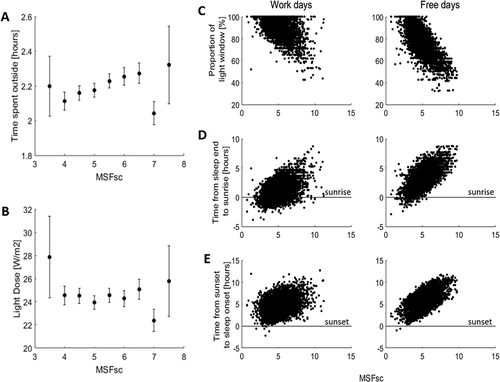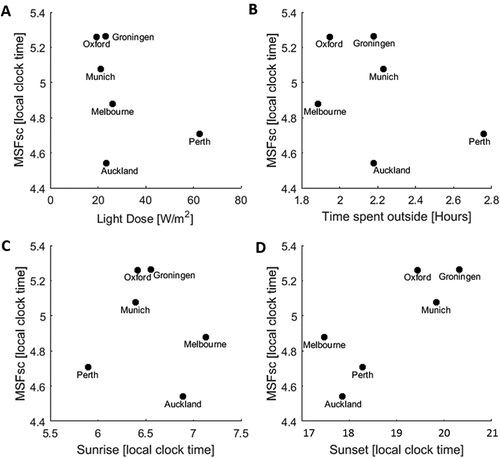Figures & data
Table 1. Average demographics, sleep timings and social jet lag for each city.
Figure 1. Relationship between mid-sleep time points (MSFsc) and ambient light conditions in students living in different cities of the Northern and Southern Hemispheres. Cities are plotted relative their distance to the equator and against (a) Average MSFsc (as time-of-day in hours (decimal time), (b) time spent outside and (c) light dose. Dashed lined boxes represent cities that are not statistically different to each other (see supplementary materials for models). Error bars = standard error of the mean. MSFsc: mid-sleep on free days sleep corrected.

Figure 2. MSFsc and ambient light conditions. Average time spent outside (a) and light dose (b) for 30 minute bins of MSFsc across all students regardless of city. Error bars represent the standard error of the mean. (c) The shorter the proportion of the light window (time between sunrise and sunset) students are awake for, the later MSFsc for work and free days. (d) The later students wake up after sunrise (represented by line) the later MSFsc for work and free days. (e) The later student go to bed after sunset (represented by line) the later MSFsc for work and free days. MSFsc: mid-sleep on free days sleep corrected.


